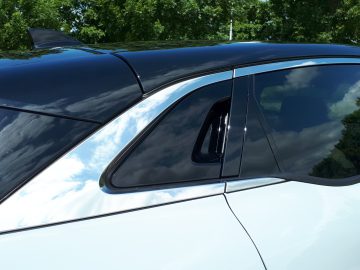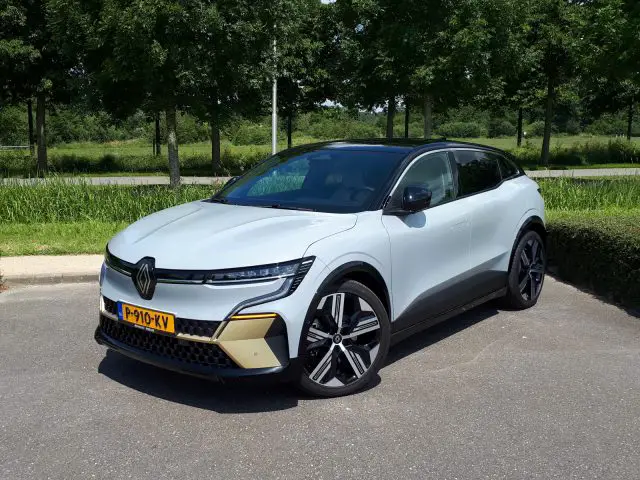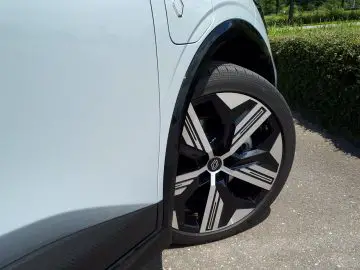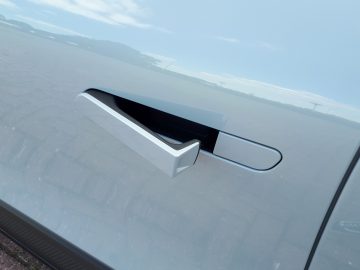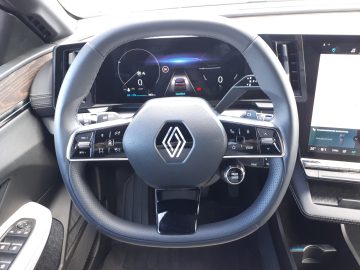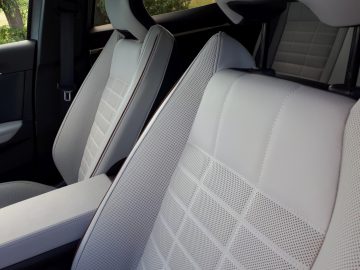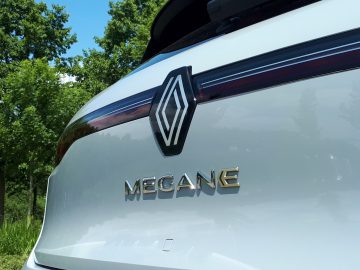Review – Renault Mégane E-Tech Electric (2022)
The new Renault Mégane is different from its predecessor in just about every way. Perhaps the biggest news is on the technical front, as the new Mégane only comes with all-electric drive. That’s why it also listens to the full name Renault Mégane E-Tech Electric. The car will be built on an entirely new platform for electric models.
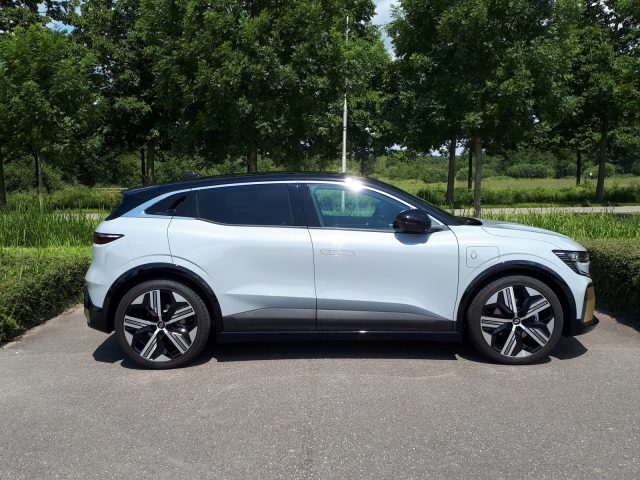
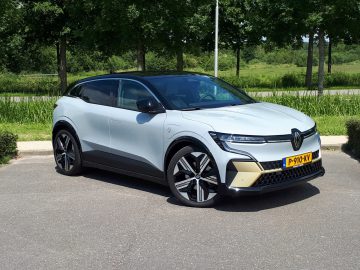

Facial deception?
Then there is the body shape. While the previous generation came as a hatchback, station wagon and in some countries also as a sedan, the new Mégane only comes as… yes, what is it really? At first glance, the Mégane appears to have become a crossover, but that’s partly a sight trick. The large wheels and particularly high waistline give the car an SUV-like appearance, but “secretly” the Mégane has remained just a hatchback.
Specifically, it is 16 cm shorter, 4 cm narrower and 6 cm higher than the hatchback version of the previous model. So that’s not even that much different. More importantly, because the wheels are positioned much more on the corners of the body, there is much more interior space despite the slightly shrunken length and width. For example, the luggage compartment offers a capacity of a hefty 440 liters.
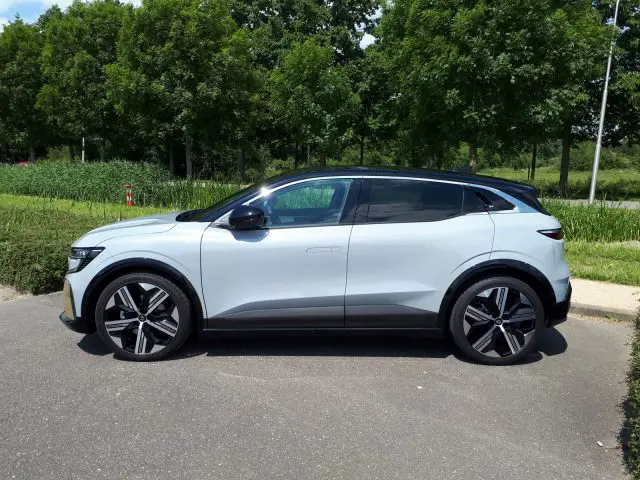
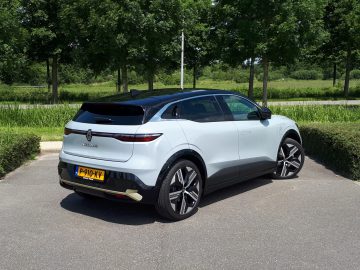

Space in the back
You also have much more room in the back seat than you would expect based on the exterior design. Only the headroom doesn’t hold up despite that extra height. When we sit down with our height of 1.80 m neatly upright, our heads already just touch the roof. However, we have little to complain about in terms of leg and shoulder room. It also faces outward a lot better than you might expect with those small side windows.
As for other seating comfort, the rear seat is on the hard side though. During test seating, we held out just fine and the average ride will be fine too, but we wonder how long it will stay comfortable when you go on a long ride. In addition, the high floor causes you to sit with your legs slightly raised, so the seat no longer supports them.
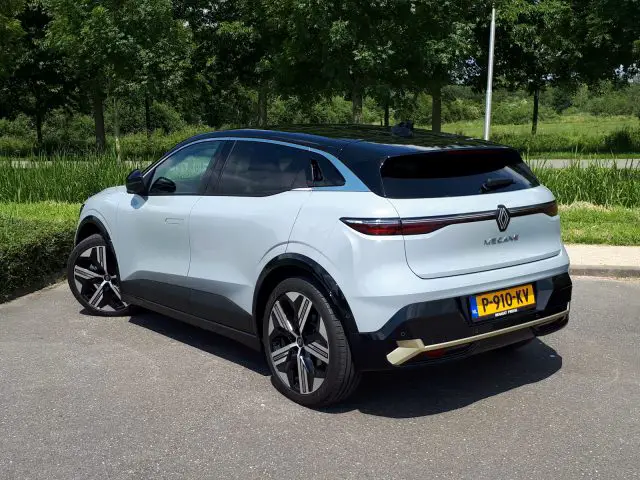


Behind the wheel
We leave the back seat and take a seat behind the wheel. Again, you have a spacious feeling. Furthermore, you look out over a fairly tightly designed, but at least tidy, dashboard. On the steering wheel are the necessary buttons to control audio, cruise control and select the driving mode. For the rest, you control almost everything through the large touchscreen. However, at the bottom of the screen there are some hotkeys for climate controls. Don’t need to open a menu for that first.

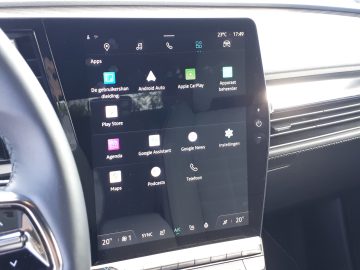
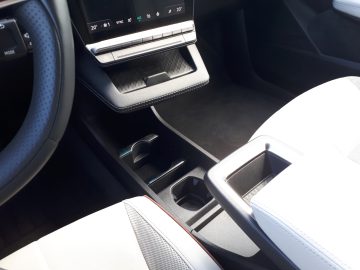
Very large smartphone
The touchscreen controls are pleasant. It actually works exactly like your smartphone or tablet. In fact, even if you haven’t paired your phone with the system, a number of “apps” match. The in itself beautifully glossy screens are, however, very sensitive to dust, fingerprints and reflections. A matte surface might have been a better choice.
Also familiar from your phone: navigation via Google Maps. Partly because it is linked to the car’s on-board computer, the navigation has been supplemented with some useful features for EV drivers. Locations of charging points, for example, but also a prediction of the remaining battery charge on arrival. That prediction turned out to be quite accurate, about which more later.
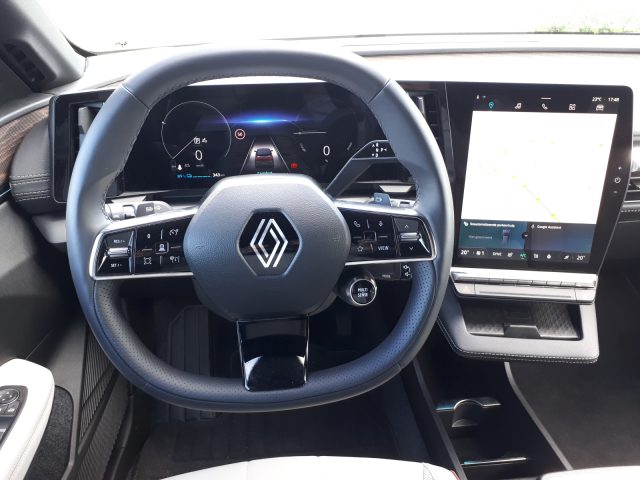
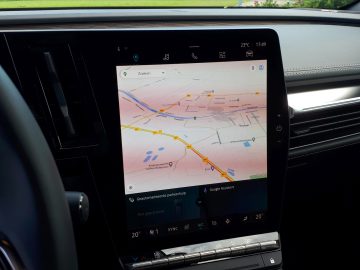

The instrumentation behind the steering wheel is just fine to read despite the mirrored surface. Also in terms of display: you clearly see the most important information and anything that is not relevant is also not seen. If, on the other hand, you want more info or a different layout, then that can also be set. You can even move full-screen navigation to it.
A nice detail is that the little car in the instrument cluster behind the steering wheel also brakes or indicates direction when you do. The little car also has a practical function, because right in front of it, you can see how many seconds of distance you are from your predecessor while driving.


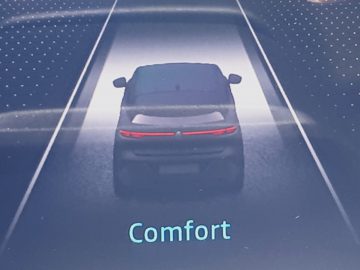
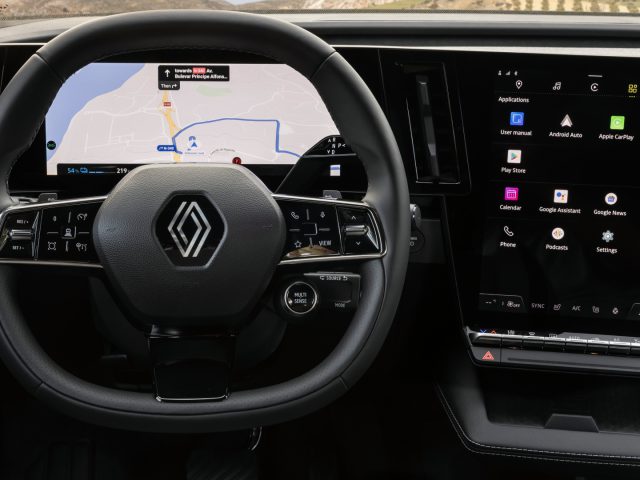


Driving the Renault Mégane E-Tech Electric
We hit the road and what quickly stands out is the ride comfort. The suspension manages to virtually smooth out uneven road surfaces. Only short bumps are noticeably transmitted, but you’ll keep that with big rims with relatively little rubber around them. Despite the comfort of the suspension, the car is neatly taut on the road when cornering. In doing so, the seats offer good lateral support and excellent seating comfort, even on faster turns such as a highway ramp or exit.
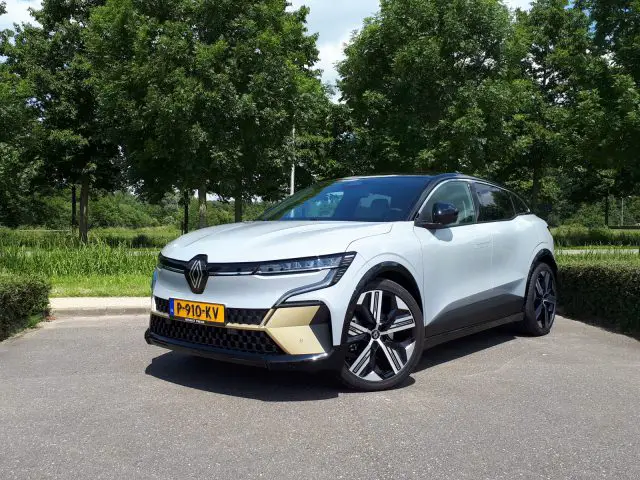
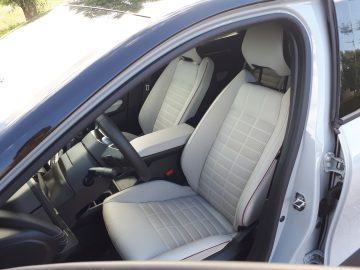
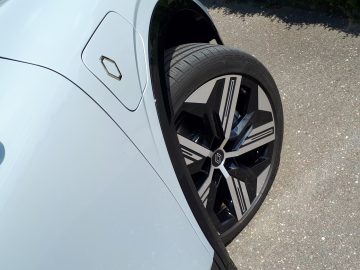
Driving mode Comfort
We already mentioned the driving modes, which you can select with the big round button on the steering wheel. As usual, there is a choice of Comfort, Eco and Sport. The “standard” Comfort mode is by far our preference. You then just have smooth acceleration and regeneration that is also easy to dose in strongest mode with the so-called “one pedal driving”.
By the way, we drive the EV60 220 hp version. In fact, it goes without saying that this gives you more than enough power, especially given the readily available torque from the electric motor. We’re sure you won’t be short of power in the 130 hp version of the Renault Mégane E-Tech Electric anytime soon either.

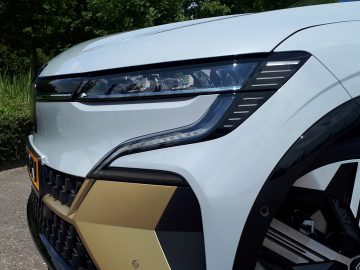

Regeneration: from coasting to one pedal driving
The degree of regeneration can be adjusted with the flippers behind the steering wheel. From very light (as if you were releasing the throttle in a regular car) to strong (brake pedal is then only needed for really strong braking or complete stopping). The latter is our preference, but if you think otherwise you can thus adjust the strength to your own preference.
Unfortunately, you do have to reset the strength of the regeneration before each drive, because the Renault Mégane E-Tech Electric always starts in the lightest mode. That resetting is a small effort, but it is an essentially unnecessary action that must be done after every start.
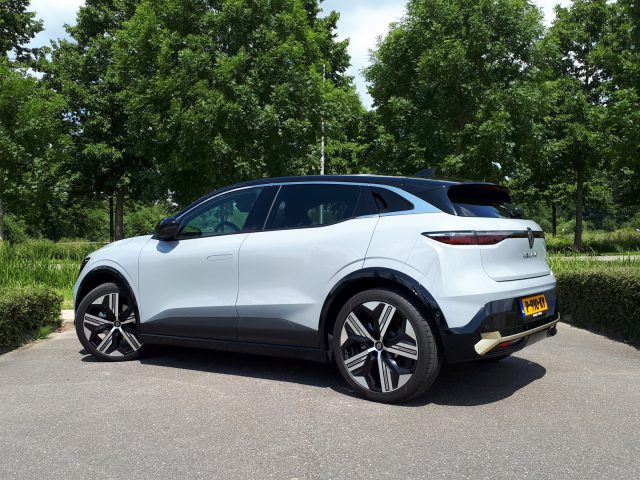
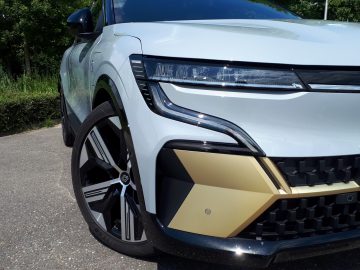
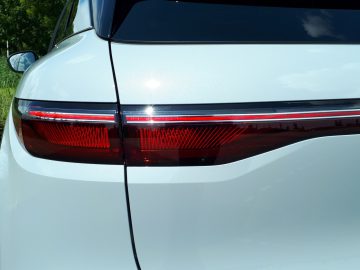
Driving mode Eco
In theory, Eco mode helps you drive economically, with a moderate response to the power pedal and extra strong regeneration. Sounds good, but in practice the combination of both makes the car feel leaden, as if it is struggling to move forward. You’re better off in Comfort mode just driving yourself as economically as possible.
Driving mode Sport
In Sport mode, on the other hand, the car responds very enthusiastically to input from the gas pedal. So enthusiastic, in fact, that you should only turn on the Sport mode if you are actually going to be driving a pot of sport on a fun and suitable road. Simply because Sport mode makes for a somewhat choppy ride under normal conditions.
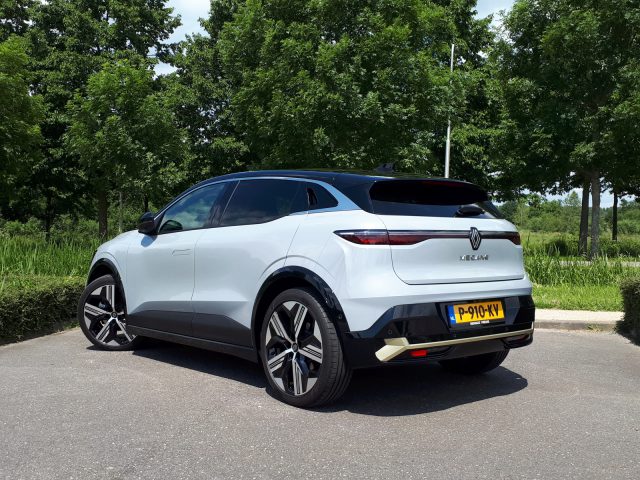
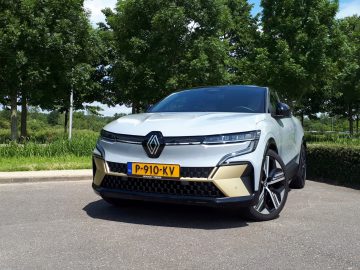

Range practice Renault Mégane E-Tech Electric
Speaking of fuel-efficient driving: on that score, the Renault Mégane E-Tech Electric positively surprised us. According to the official WLTP data, the version we drove has a range of 450 kilometers and an average power consumption of 16.1 kWh/km. With a fully charged battery, the trip computer showed an expected range of about 370 kilometers with us.
On the one hand, that’s a lot less than the WLTP value, but on the other hand, it does subsequently live up to those 370 kilometers. In fact, we even experienced a few times that we used up fewer miles of range than the drive was long. We really don’t see that very often. The average power consumption at the end of the test week also surprised positively: 13.9 kWh/100 km. A lot more economical than the factory quote!
To give some context to these figures, our mileage was mainly on freeways and N roads. In addition, we had ‘perfect’ weather conditions during the test week: little wind and outside temperatures of over 15 degrees, which is the ideal operating temperature for the battery. An economical driving style also helps, of course. At the end of the drive, the Renault Mégane E-Tech Electric’s on-board computer gives you an Eco score. Apparently we have an economical driving style, because without trying too hard we always achieved a score of over 90% and even 100% on one occasion.
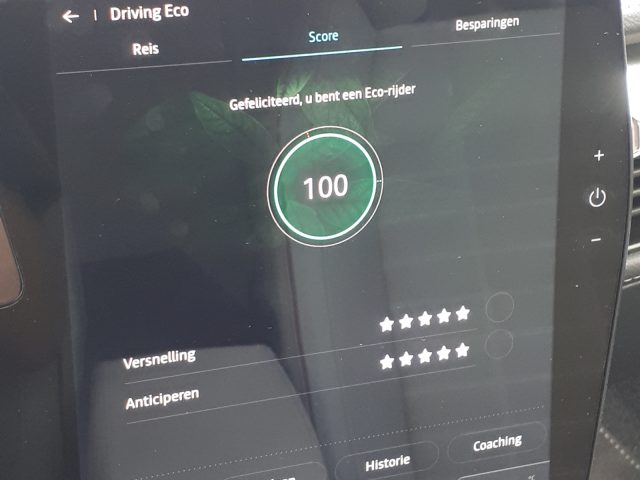
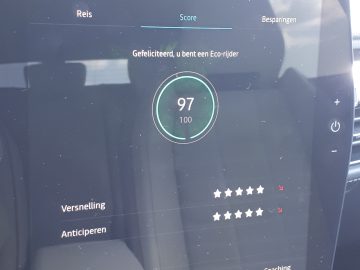

Point of improvement: view around
So is there nothing to complain about? Yet. The visibility all around really leaves something to be desired. You may like the aforementioned high waistline, but it makes for small side windows. Add to that the fact that the window bars are also quite thick and the result is substantial blind spots. You do need the parking assistants because of this, but even while driving it is sometimes good to watch out.
Not only are the rear window bars thick, even the A-pillar could use a slimming treatment. When approaching an intersection, a complete cyclist simply disappeared behind it, approaching from a side street. It’s that we had to stop for that intersection anyway….
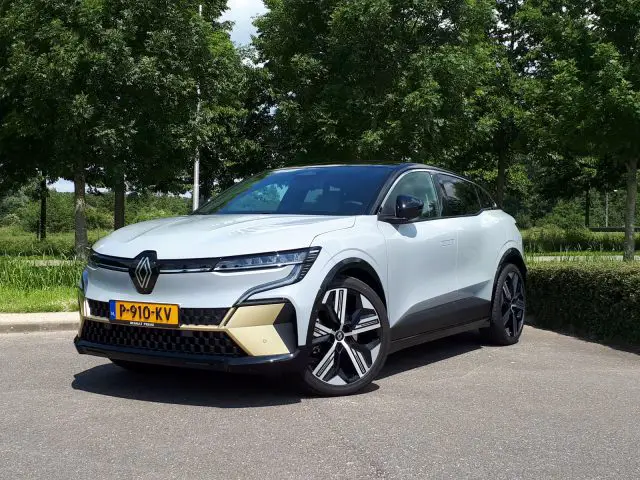
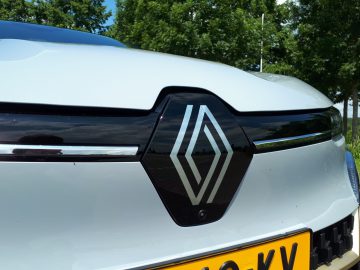
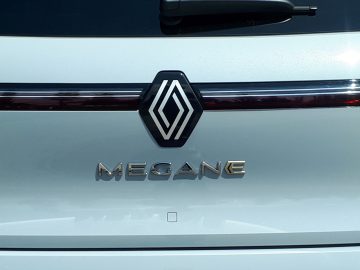
Digital rearview mirror
Also for the topic of sight: the digital rearview mirror. On the one hand, it is a convenient solution for those who often have passengers in the back who block the view through the rear window. In addition, the image from the digital rearview mirror is also neatly clear and razor sharp. Nothing to complain about in that regard.
However, the digital rearview mirror does take some getting used to at first. Especially estimating how great the distance to those behind actually is. In addition, the surface of the screen is still glossy, which means that, especially on a sunny day, there is often a lot of reflection through the camera image.
The screen is glossy, as you can still use the mirror as a conventional rearview mirror at the touch of a button. This does bring you back to the point above: all-round visibility. Because of the small rear window, it is a bit like peering out through the letterbox. It is enough, however, to keep an eye on the traffic right behind you.
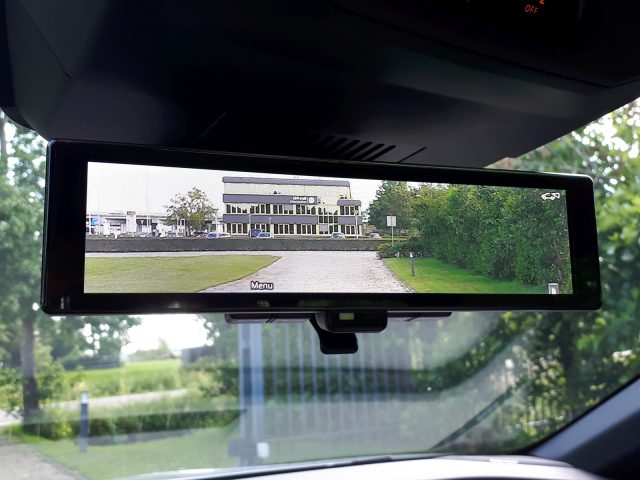
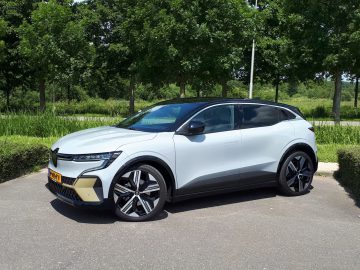
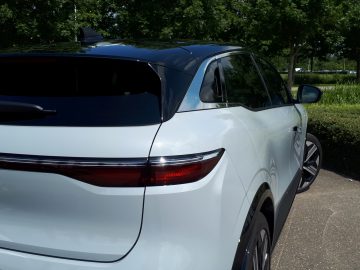
Sound Comfort
To come back to driving comfort for a moment: acoustically it is also well done. All driving noises remain nicely in the background. Of course, there is no engine noise anyway, though the buzzing “pedestrian warning” at low speed is sometimes a bit pervasive.
Harman Kardon audio system
Speaking of acoustics, the Harman Kardon audio system is really a must. Regardless, a good sound comes from the speakers, but there are even numerous setting options. In addition to usual options such as bass strength, treble, front/back emphasis, etc., there are also sound themes. Do you want clear studio sound, the reverberation of a concert hall or just pounding club music to its full advantage: everything is possible.
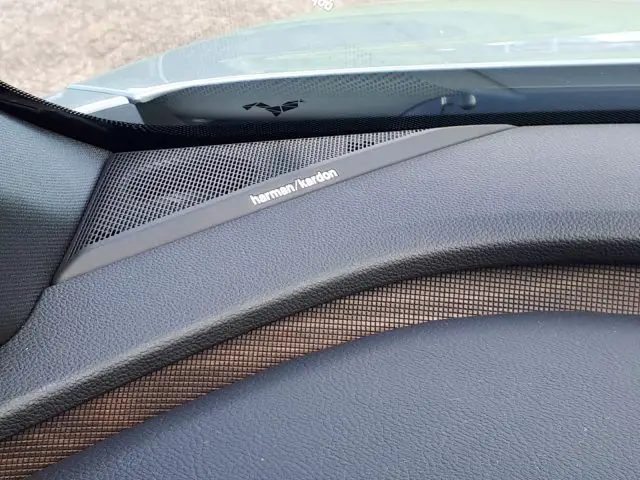

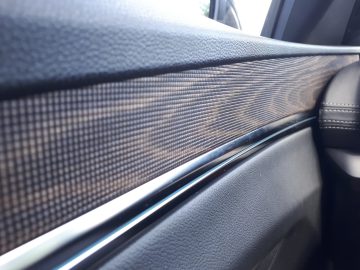
Prices and equipment Renault Mégane E-Tech Electric
In terms of propulsion, there are three variants of the Renault Mégane E-Tech Electric: the EV40 130 hp (from 37,590 euros), the EV60 130 hp (from 43,190 euros) and the EV60 220 hp (from 42,190 euros). The power of the electric motor(s) is in the name and the first number indicates the size of the battery pack (40 or 60 kWh).
Then there are the Equilibre (from 37,590 euros), Techno (from 40,590 euros), Evolution (from 43,190 euros) and Iconic (from 48,190 euros) trim levels. Most drive variants can be combined with most trim levels. One exception is the EV60 130 hp, which is only available as an Evolution.

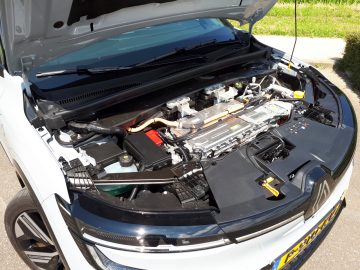

Equipment Renault Mégane E-Tech Electric
As the “entry-level” Equilibre, the Renault Mégane E-Tech Electric already comes standard with features such as 18-inch alloy wheels, full LED lighting, keyless entry, 9-inch central touchscreen, infotainment with wireless Apple CarPlay and Android Auto and the first five years of free Pack Remote Servies, TEP leather-upholstered steering wheel and interior parts, seat covers made from recycled materials. Furthermore, there is already a comprehensive package of safety and assistance systems as standard, including traffic sign recognition and reversing camera.
Our test car is top model Iconic, standard features include 20-inch alloy wheels, two-tone bodywork, partially leather-trimmed dashboard, front seats with massage function, the most comprehensive infotainment with 12-inch touchscreen and navigation and the Harman Kardon Premium Sound system. That’s topped off with some optional visual touches, bringing the total price of our test car to just under 50 grand.
The most current prices and equipment can of course be found at www.renault.nl.
Conclusion Renault Mégane E-Tech Electric
We really find the visibility all around a strong point of improvement, for the rest our comments are mostly minor ones. After our week of testing, we remember the Renault Mégane E-Tech Electric primarily as a very nice driving car that impresses with low power consumption and a realistic display of range by the trip computer. The new Renault Mégane cannot be compared to its predecessor because of the major differences, but it could become just as successful. Competition in the electric car market is getting fiercer, but Renault has a strong offering with the Mégane E-Tech Electric.

